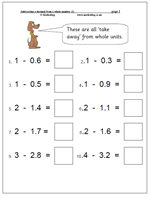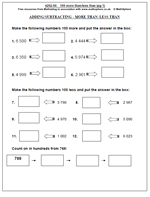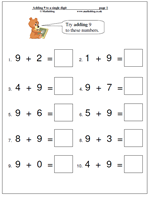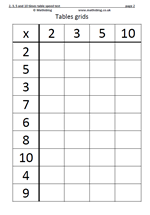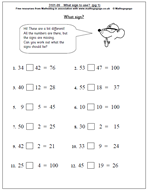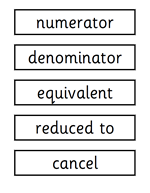 This list contains the key vocabulary for Fractions, decimals, percentages and ratio in year 6.
This list contains the key vocabulary for Fractions, decimals, percentages and ratio in year 6.
Children will have come across all these words in earlier years, but by the end of year 6 (10/11 yr old) they should have a good understanding of all of them
Fraction proper fraction improper fraction
Numerator denominator
Equivalent reduced to cancel
Half quarter eighth
Third sixth ninth twelfth
Fifth tenth twentieth
Hundredth thousandth
Proportion decimal fraction
Decimal point decimal place
percentage per cent %
When spelling the word twelfth often causes problems. They are all shown in a larger font below if you want to cut them out and print them.
If you are unsure of any of the meanings try one of the free online maths dictionaries such as at
www.mathsphere.co.uk or www.amathsdictionaryforkids.com/
(Taken from Mathematical Vocabulary Book DfEE)
